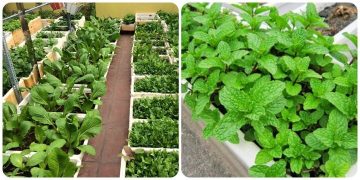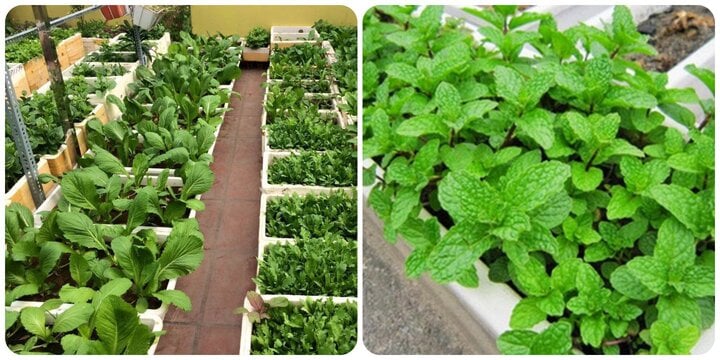#VegetableCultivation #FoamContainerGardening #SustainableAgriculture #UrbanFarming #AgriculturalInnovation #VegetableGrowth #SpaceSavingGardens #HomeGardening #PolystyreneSafety #OrganicFarming
In recent years, many individuals have turned to unconventional methods for growing vegetables, utilizing foam containers or plastic bottles to make the most of limited space. A critical question arises: Is it safe to grow vegetables in foam containers?
According to an article by PGS Tran Hong Con from the Chemistry Department at Hanoi National University, foam containers, often made from Polystyrene, are considered safe for growing vegetables. Polystyrene, which constitutes 95% of these containers, is deemed safe unless exposed to temperatures exceeding 180-200 degrees Celsius—far beyond the conditions on balconies or rooftops, typically ranging from 50-60 degrees Celsius.
Ensuring the quality of soil, clean water, and proper fertilization is crucial when opting for foam containers or plastic bottles for vegetable cultivation. It’s essential to focus on creating an environment that promotes healthy plant growth without compromising on health or incurring unnecessary costs.
Effective Foam Container Vegetable Cultivation:
- Preparation:
Use deep foam containers to provide ample space for robust root development.
Obtain organic soil, microbial fertilizers, and high-quality vegetable seeds.
Utilize wood chips and specialized water for supplementary irrigation and nutrient enhancement.
Suitable for various spaces such as rooftops, balconies, or surrounding areas.
- Cultivation:
Create small holes at the bottom of each foam container for water drainage.
Fill ¾ of the container with organic soil (pre-mixed with microbial fertilizers).
Elevate containers on supports, spray clean water to moisten, and prepare for seed sowing.
Suitable vegetable seeds include lettuce, spinach, carrots, and herbs. Soak seeds in warm water for 6-8 hours before planting.
Make small holes in the soil, place seeds, cover lightly with wood chips, and water the plants.
- Care:
Regularly check and water the plants to avoid overwatering or dehydration.
In hot, sunny days, consider watering twice daily.
Place containers in well-lit areas, providing shade for delicate, young plants.
Cultivating vegetables in foam containers proves to be a practical and space-efficient solution, ensuring safety when proper precautions are observed. By focusing on soil quality, water sources, and adequate space, individuals can successfully grow a variety of vegetables in foam containers, optimizing both resources and space.































